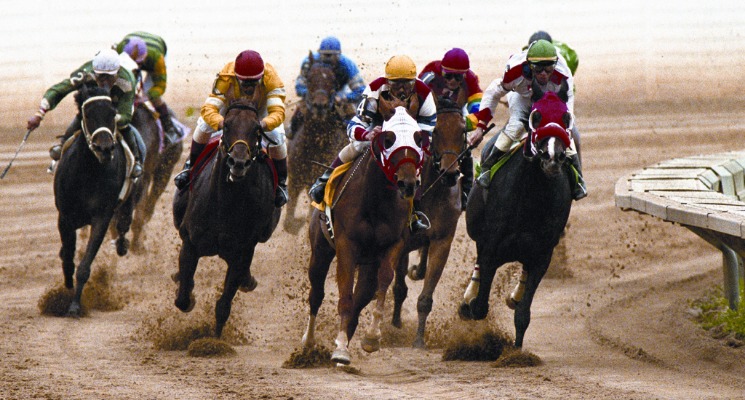From the thunderous roar of the crowd to the elegant power of thoroughbreds, horse racing captivates millions worldwide, blending sport with the strategic allure of wagering. Engaging in horse racing betting isn’t just about luck; it’s a dynamic pursuit that rewards insight, analysis, and a deep appreciation for the sport’s nuances. Whether you’re drawn to the glamour of the Kentucky Derby or the daily excitement of local tracks, understanding how to navigate this world can elevate your experience from mere spectator to savvy participant. This guide delves into the essentials, offering a roadmap to help you make informed decisions and potentially reap the rewards of your knowledge.
The Foundation: Exploring Different Types of Horse Racing Bets
At the heart of horse racing betting lies a diverse array of wager types, each with its own risk-reward profile and strategic considerations. Starting with the basics, win, place, and show bets are the most straightforward options. A win bet requires your selected horse to finish first, offering higher payouts but greater risk. In contrast, a place bet pays out if the horse finishes first or second, while a show bet extends that to the top three positions, providing more security but lower returns. These are ideal for beginners, as they simplify the process and build confidence in reading race dynamics.
Moving beyond simple bets, exotic wagers introduce layers of complexity and potential for substantial payouts. For instance, an exacta involves picking the first two finishers in exact order, while a trifecta requires the top three in precise sequence. These bets demand a deeper understanding of horse performance, jockey tactics, and track conditions, but they can yield life-changing sums for those who master them. Another popular option is the quinella, where you select the top two finishers in any order, balancing difficulty and reward. Additionally, multi-race bets like the daily double or pick 6 challenge bettors to predict winners across consecutive races, testing endurance and insight over a full race card.
To succeed in these wagers, it’s crucial to analyze factors like past performance, speed figures, and breeding lines. Many bettors use tools like program guides and online databases to assess each horse’s form, but developing a keen eye for subtle cues—such as a horse’s behavior in the paddock or changes in equipment—can provide an edge. As you explore these options, remember that responsible betting starts with education, and resources like horse racing betting can offer foundational knowledge to build upon. By familiarizing yourself with these bet types, you lay the groundwork for more advanced strategies and a more engaging track experience.
Sharpening Your Edge: Proven Betting Strategies and Tips
Success in horse racing betting hinges on more than just picking favorites; it requires a disciplined approach rooted in research and risk management. One of the most effective strategies is handicapping, the art of evaluating horses to predict outcomes. This involves analyzing a range of factors, including recent race times, class levels, and workout patterns. For example, a horse that has consistently improved its speed figures in similar conditions might be undervalued by the public, presenting a prime betting opportunity. Additionally, consider the jockey and trainer statistics—teams with high win percentages in specific scenarios, like turf races or muddy tracks, often outperform expectations, making them worth a closer look.
Another critical element is money management, which separates casual bettors from long-term winners. Establishing a bankroll—a set amount of money dedicated solely to betting—helps prevent impulsive decisions and emotional losses. A common tactic is the flat-betting approach, where you wager the same amount on each race, regardless of confidence level, to minimize volatility. For those seeking higher returns, the Kelly Criterion can optimize bet sizes based on perceived edge, though it requires precise probability estimates. Always avoid chasing losses by increasing bets after a setback; instead, stick to your plan and focus on value-driven opportunities, such as overlays where the odds exceed the horse’s true chances of winning.
Integrating technology and data analysis can further refine your strategy. Modern bettors often use software to track trends, like how certain sires produce offspring excelling in sprint distances or how pace scenarios affect race outcomes. Watching replays of previous races can reveal nuances missed in written form, such as a horse’s ability to navigate traffic or respond to whip cues. By combining these tools with track-specific knowledge—such as biases toward inside posts or front-runners—you can develop a personalized system that adapts to varying conditions. Ultimately, consistency and patience are key; even professional bettors experience losing streaks, but a methodical approach ensures sustained progress over time.
From the Track to the Bank: Inspiring Betting Success Stories
Real-world examples vividly illustrate how strategic horse racing betting can lead to remarkable victories, blending preparation with pivotal moments of insight. One legendary case is the 1913 Derby at Epsom Downs, where a 100-1 longshot named Aboyeur triumphed in a race marred by disqualifications. Bettors who focused on the horse’s resilience in chaotic conditions, rather than sheer odds, reaped immense rewards, highlighting the value of situational analysis over popular opinion. Similarly, in modern times, the 2009 Kentucky Derby saw Mine That Bird defy 50-1 odds, with astute bettors capitalizing on his strong closing speed and a muddy track that favored his running style. These stories underscore that underdogs can prevail when key factors align, encouraging bettors to look beyond the favorites.
Another compelling narrative involves syndicates and professional betting groups, which use pooled resources and advanced analytics to secure massive payouts. For instance, the “Courage Under Fire” syndicate in Australia famously won over $1 million on a single trifecta bet by meticulously studying form guides and leveraging computer models to identify value in complex wagers. This approach demonstrates how collaboration and data-driven decisions can amplify success, especially in exotic bets where margins are slim but payouts are exponential. On an individual level, bettors like Zeljko Ranogajec have built fortunes through mathematical modeling and bankroll discipline, showing that treating betting as a business—rather than a gamble—can yield sustainable profits.
These successes often share common threads: a deep respect for the sport’s variables and an unwavering commitment to research. For example, in the 2015 Breeders’ Cup Classic, American Pharoah’s Triple Crown win attracted heavy public betting, but sharp players found value in exacta and trifecta combinations by analyzing pace setters and closers. By studying such cases, aspiring bettors can learn to identify patterns—like how certain tracks favor early speed or how jockey changes impact performance—and apply them to their own strategies. While not every bet will result in a windfall, these real-world triumphs prove that with dedication and a keen eye, horse racing betting can be both intellectually stimulating and financially rewarding.


